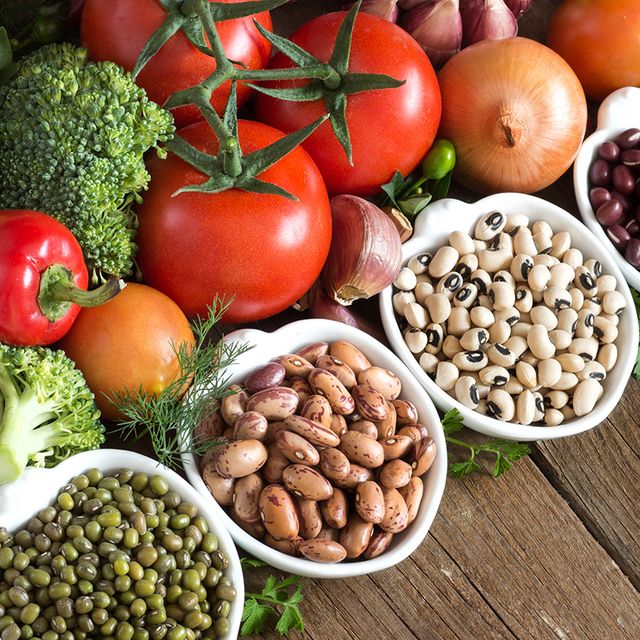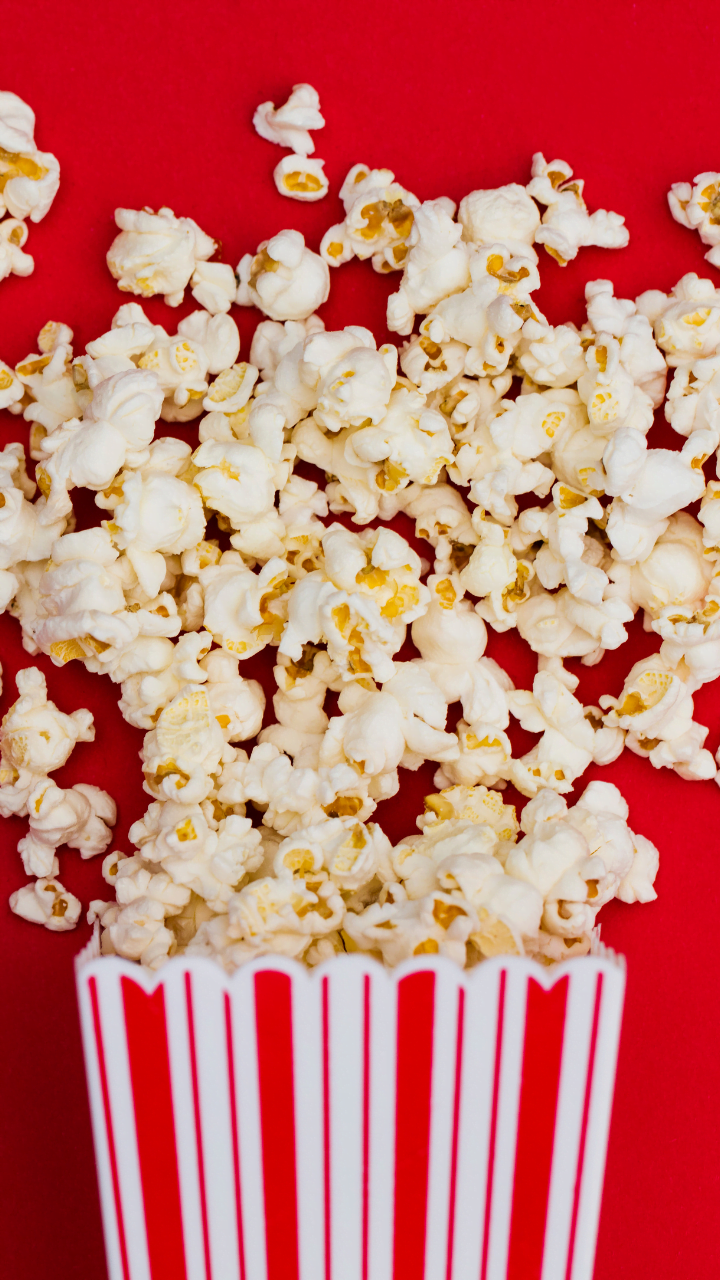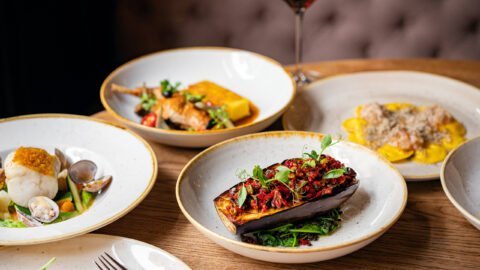Who says staying satisfied means sacrificing flavor? Many people associate a healthy diet rich in fiber with bland vegetables. But this article is here to debunk that myth! We’ll explore 10 delicious high-fiber foods that can be easily incorporated into your daily routine, keeping you feeling full and energized throughout the day.
But why is fiber so important? High-fiber foods play a crucial role in maintaining a healthy digestive system. Because your body can’t fully break them down, they add bulk and help regulate bowel movements. This not only promotes digestive health but also contributes to a feeling of fullness, preventing those pesky hunger pangs that can derail your healthy eating goals.
There are two main types of fiber: soluble and insoluble. High-fiber foods rich in soluble fiber, like oats, peas, and fruits, form a gel-like substance in your digestive system, aiding in nutrient absorption. Insoluble fiber, found in whole-wheat flour, nuts, and vegetables like green beans, helps keep things moving smoothly through your digestive tract.
The key to reaping the benefits of high-fiber foods is to incorporate them gradually into your diet. This article will explore a variety of delicious options you can add to your meals and snacks, setting you on the path to a happy gut and a more satisfied you!
Table of Contents
Fiber Up! How Much Do You Really Need?
The recommended daily intake varies slightly depending on age and gender. Generally, women are advised to aim for 21 to 25 grams of fiber per day, while men should target 30 to 38 grams. Remember, these are just guidelines. It’s always best to consult with a healthcare professional to determine the ideal fiber intake for your specific needs.

Delicious Ways to Boost Your Fiber Intake with These High-Fiber Foods!
Feeling like your diet lacks excitement when it comes to high-fiber foods? You’re not alone! Many people associate fiber with bland vegetables and struggle to meet their daily needs. But fear not, fellow health enthusiasts! This article is here to show you that a fiber-rich diet can be anything but boring.

Broccoli
Broccoli is a powerhouse when it comes to high-fiber foods. While it may take about 15 cups to reach the daily recommended intake (ouch!), it boasts an impressive 1.8 grams of fiber per cup. Plus, it’s low in calories, making it a guilt-free way to boost your fiber intake.
Brussels Sprouts
Don’t underestimate the mighty Brussels sprout! These versatile mini cabbages offer a delicious 3 grams of fiber per cup. Whether you enjoy them boiled, broiled, pan-fried, or even raw in a slaw, Brussels sprouts are a flavorful way to boost your fiber intake. The recommended daily amount translates to roughly 8 cups of Brussels sprouts, so mix and match them with other fiber-rich options for a balanced approach.
Asparagus
Asparagus is another excellent source of fiber, packing 2.1 grams per cup. However, the sheer quantity needed to reach your daily goals (approximately 67 spears) might be a bit daunting for most. Here’s a tip: try incorporating thinly sliced raw asparagus into salads or sandwiches for a delightful textural and flavor contrast. This way, you can enjoy the fiber benefits without overwhelming yourself.
Artichoke

This gourmet veggie boasts 4 grams of fiber per medium serving. While enjoying 4 artichokes in a day might be a feat, incorporate them into pizzas, pair them with dips, or steam them for a satisfying side dish.
Acorn Squash

This versatile winter squash offers 1.5 grams of fiber per cup. Bake it whole, scoop out the insides, or stuff it with nutritious fillings like wild rice or quinoa for a fiber-filled meal. Reaching your daily fiber goals with acorn squash alone would require a significant amount (around 13 cups), so be sure to combine it with other fiber-rich options.
Green Peas
Don’t underestimate the power of the humble green pea! This little veggie packs a punch with 8.8 grams of fiber per cup. Feel free to indulge in generous portions to up your fiber intake. Just 3 cups of green peas will get you closer to your daily goals, and they’re a delicious source of iron, manganese, and vitamins A and C.
Turnip Greens
This leafy green offers a mild flavor and a surprising amount of fiber – 4 grams per cup. Enjoy them like spinach, blend them into smoothies, or even juice them for a concentrated dose of vitamins and fiber. Reaching your daily intake with turnip greens alone would require a significant amount (around 16 cups), so incorporate them with other high-fiber foods.
Carrots
While not the king of fiber (offering 2 grams per large carrot), carrots are still a healthy and delicious choice. Lightly steaming them enhances their beta-carotene content. However, reaching your daily fiber goals with just carrots would require a significant quantity (approximately 14 large carrots). Enjoy them in moderation and combine them with other high-fiber foods for a well-rounded diet.
Cauliflower
Riced cauliflower is a favorite among those seeking high-fiber foods, offering a low-carb alternative to starchy veggies. Transform it into a pizza crust or crispy chips for a tasty, fiber-packed treat. While cauliflower is a fantastic way to boost your fiber intake, aiming for the daily recommended 28 grams solely from cauliflower would mean consuming about 2 medium-sized heads every day.
Avocados

Avocados are a luscious addition to your diet and a standout among high-fiber foods. Whether mashed into guacamole or spread on toast, a medium-sized avocado packs about 9 grams of fiber. To hit your daily recommended fiber intake of 28 grams, you’d need to enjoy around 3 avocados throughout the day.
Apples
Apples are not only crunchy and delicious but also rich in soluble fiber, making them a top choice among high-fiber foods. Pectin-packed apples contribute to digestive health. However, to meet the daily recommended 28 grams of fiber, you’d have to crunch through about 7 apples. That’s a lot of slicing and snacking!
Strawberries
Strawberries aren’t just a sweet treat; they’re also high in fiber and vitamin C. While they add a burst of flavor to salads and desserts, they may not be enough on their own to meet your daily fiber needs. In fact, you’d have to enjoy about 78 large strawberries to reach the recommended 28 grams of fiber. Consider pairing them with other high-fiber foods or supplements like Metamucil.
Bananas
Bananas are a beloved fruit for good reason! They’re portable, convenient, and naturally sweet, making them a perfect on-the-go snack. But while a single banana offers a respectable 2 grams of fiber, relying solely on them to meet your daily fiber needs (around 14 bananas!) wouldn’t be the most practical approach.

The key to a fiber-rich diet is variety. While bananas are a great source of instant energy and some fiber, incorporating them alongside other high-fiber foods will help you reach your daily goals in a more enjoyable way. Think banana slices in your morning oatmeal, a creamy banana smoothie with spinach, or even a fun banana-based dessert with a healthy twist!
Raspberries
Don’t miss out on nature’s candy – raspberries! These vibrant berries are a delicious and rewarding way to add high-fiber foods to your diet. Packed with fiber and bursting with a sweet and tangy flavor, raspberries are a versatile ingredient that can brighten up your breakfast smoothie, add a touch of sweetness to your salad, or become the star of a decadent dessert.
While reaching the recommended daily fiber intake of 28 grams would require approximately 3.5 cups of raspberries, even a smaller portion offers a significant fiber boost. The best part? They’re incredibly versatile! Enjoy them fresh, frozen, or incorporate them into your favorite recipes.
Almonds
Almonds are a powerhouse among high-fiber foods, boasting nearly 18 grams of fiber per cup. Sprinkle them over dishes for a crunchy fiber boost. To reach the daily recommended fiber intake of 28 grams, you’d need around 1.5 cups of almonds. While almond butter offers fiber benefits, almond milk doesn’t provide the same fiber content.
Pecans

Pecans are not only delicious but also a rich source of fiber, requiring about 3 cups of pecan halves to meet your daily recommended intake. Beyond fiber, they pack in zinc, beta-carotene, and other nutrients. Toasted pecans make a delightful salad topping or a tasty addition to baked goods, making them a versatile choice among high-fiber foods.
Peanuts
Who doesn’t love a classic PB&J? But did you know this childhood favorite can be a sneaky source of high-fiber foods? Peanuts themselves are a great source of fiber, but to maximize the benefits, pair them with whole-grain bread. While it would take a whopping 2 cups of raw peanuts to reach your daily fiber goals, incorporating them into your diet is a delicious way to boost your fiber intake.
Walnuts
Walnuts are a true superfood, celebrated for their heart-healthy omega-3 fats. But their benefits extend beyond heart health – walnuts are also a fantastic source of high-fiber foods. Aim for about 3.5 cups daily to reach your recommended fiber intake. Don’t worry, incorporating them into your diet is easy! Sprinkle them over cereal and salads for a delightful crunch, or blend them into your morning smoothie for a fiber and protein boost.
Chia Seeds
These tiny seeds are loaded with soluble fiber, making them a fantastic thickener for smoothies or a delightful, crunchy topping for yogurt. The best part? Just one ounce of chia seeds packs a whopping 10 grams of fiber, making them a convenient and delicious way to elevate your fiber intake and support your digestive health.
Navy Beans
A staple in baked bean dishes and soups, navy beans offer a whopping 9.6 grams of fiber per cup. Reaching your daily fiber goals with navy beans would require approximately 2 cups, but incorporating them into various recipes is a tasty way to get closer to your target.
Split Peas

Don’t relegate split peas to just soups! These versatile legumes boast 8.3 grams of fiber per cup and can be transformed into a delightful hummus-like spread or even form the base for a flavorful curry dish. The recommended daily fiber intake translates to roughly 2 cups of cooked split peas, but feel free to experiment and discover new ways to enjoy them.
Kidney Beans
A beloved ingredient in chili recipes, kidney beans are known for holding their shape well during long cooking times. But beyond their culinary versatility, they’re also a champion of high-fiber foods, offering a substantial 13.1 grams of fiber per cup. To reach your daily recommended intake, you’d need about 2.5 cups of kidney beans.
Soybeans
A versatile ingredient enjoyed in various forms, soybeans offer a good source of fiber with 10.8 grams per cup serving. Reaching your daily fiber goals with soybeans would require approximately 2.5 cups of raw soybeans, but they can be incorporated into your diet in various ways, from tofu to edamame.
Lentils
Red, yellow, brown, or green – lentils come in a variety of colors and offer a remarkable 20.5 grams of fiber per cup! This makes them the clear champion when it comes to fiber content among legumes. Just 1.5 cups of raw lentils will get you close to your daily fiber goals. Enjoy them in soups, stews, or even as the base for veggie burgers. Lentils are a budget-friendly and incredibly nutritious way to boost your fiber intake.
Barley
Don’t relegate barley to winter soups! This chewy grain boasts a significant amount of fiber, with 5 cups of cooked barley providing your daily recommended intake. Explore its versatility – add it to roasted vegetables for extra texture or prepare a flavorful barley pilaf.
Whole Grain Pasta
One cup of cooked whole-grain penne offers a respectable 4.46 grams of fiber. While reaching your daily goals with pasta alone would require a significant amount (over 6 cups), it’s a delicious way to contribute to your overall fiber intake.
Quinoa
This protein powerhouse also shines when it comes to high-fiber foods. A single cup of cooked quinoa offers 5.18 grams of fiber. While reaching your daily goals would require roughly 5.4 cups, incorporating quinoa into your weekly dinner rotation is a delicious way to add fiber and other essential nutrients. For a sweet twist, try quinoa cooked with cinnamon and sugar!
Oats

A heart-healthy champion, oats are particularly rich in soluble fiber, offering 4 grams per cup. They’re incredibly versatile, enjoyed as cooked oatmeal or baked into delicious cookies, muffins, and granola. Reaching your daily fiber intake solely with oats would require a substantial amount (around 7 cups cooked instant oats). Focus on incorporating oats into your diet along with other high-fiber foods for a well-rounded approach.
Popcorn

Movie nights just got a whole lot healthier! Air-popped popcorn is a delightful and surprisingly good source of fiber. However, reaching your daily goals with popcorn alone would require a massive amount (over 2 gallons!). The key is to enjoy it in moderation and explore flavorful toppings. Nutritional yeast offers a cheesy twist, or experiment with your favorite herbs and spices to create a custom popcorn experience.






